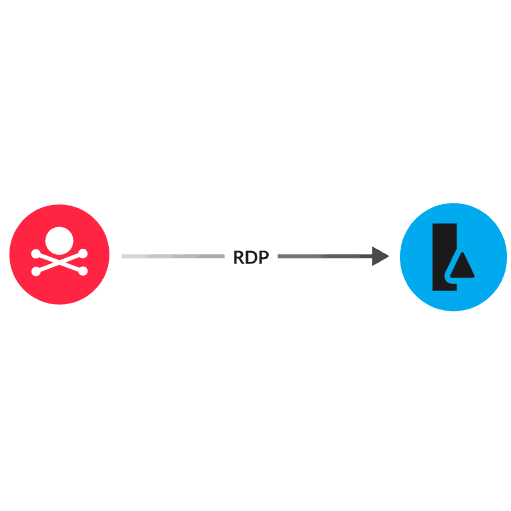- Platform
- Solutions
- Modern NDR
- Resources
- Company
Platform
Modern NDR
Resources
DETECTION OVERVIEW
Risk Factors
Domain controllers (DC) store valuable account data, making them a common target in post-compromise attacks. Remote Desktop Protocol (RDP) can help administrators connect to a DC and manage account data. But attackers with domain administrator credentials can also connect to DCs over RDP. If an attacker successfully establishes an RDP session with the DC, the attacker can update account information, steal passwords, and identify new targets in trusted domains.
The system might change the risk score for this detection.
Kill Chain

Active Directory provides a central point for managing account data in a network. The DC is a server that stores account data for a domain. Attackers who have infiltrated the network and acquired domain administrator credentials can remotely interact with a DC over RDP. The attacker sends an RDP request to the DC to open a connection. After an RDP session is established, the attacker interacts with account data on the DC through a graphical user interface (GUI).
Disable the Remote Desktop Service on devices unless required
Remove the default local Administrators group from the list of approved RDP groups and add specific users to the list
Only allow incoming external RDP connections from trusted devices
Limit the number of RDP login attempts, and then lock user accounts that exceed this number
Review access controls to ensure that only authorized users can connect through RDP
